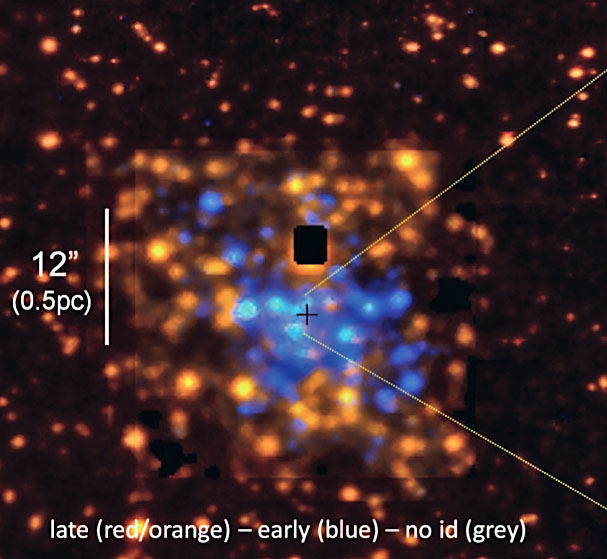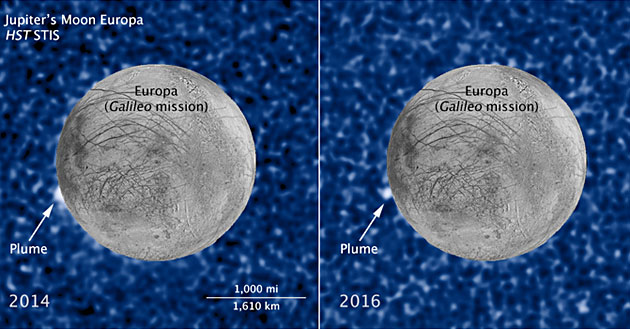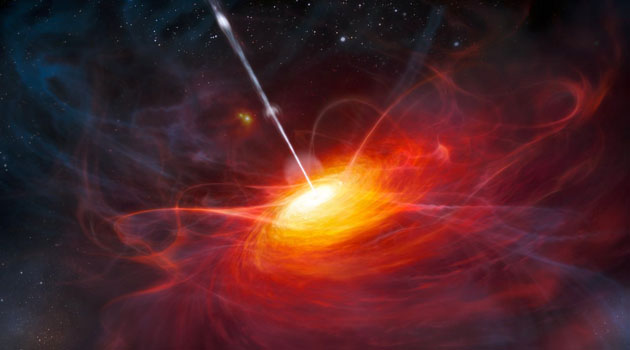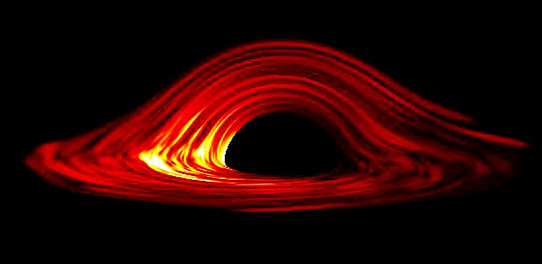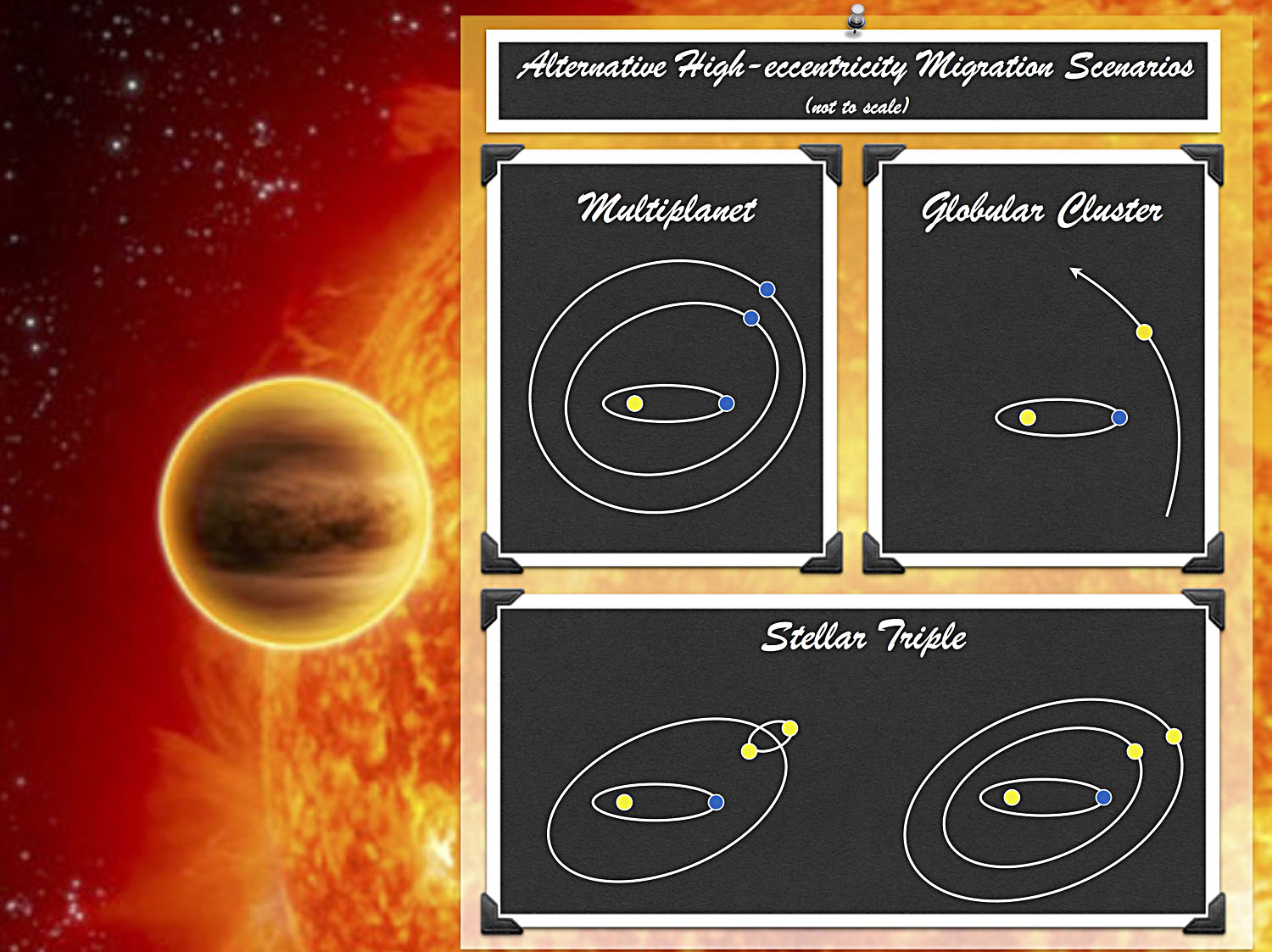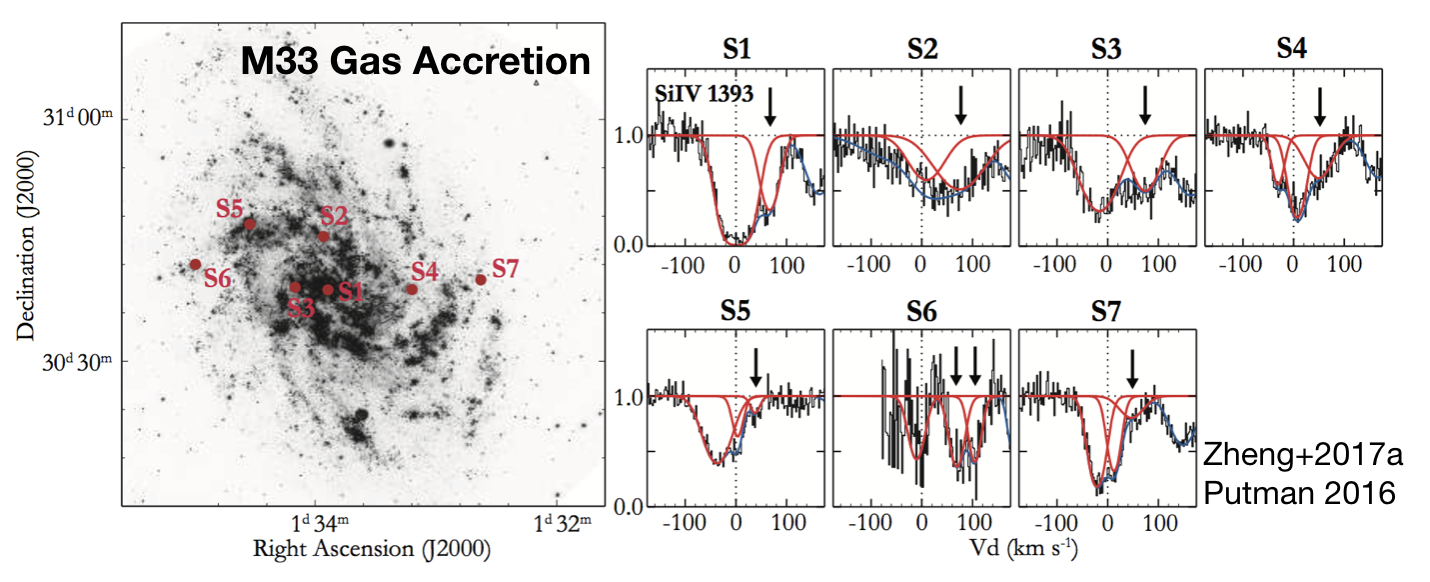 |
 |
 |
 |
 |
 |
 |
 |
 |
 |
 |
 |
|
Talks & Events
|
Astro Tuesday Series: 2017
How do pulsars shine? The modeling of pulsar radio and gamma-ray emission suggests that in order to interpret the observations one needs to understand the field geometry and the plasma state in the emission region. In recent years, significant progress has been achieved in understanding the magnetospheric structure in the limit of abundant plasma supply. However, the very presence of dense plasma everywhere in the magnetosphere is not obvious. Even the region where the observed emission is produced is subject to debate. To address this from first principles, we constructed global kinetic simulations of pulsar magnetospheres using relativistic Particle-in-Cell codes, which capture the physics of plasma production and particle acceleration. In this talk I will describe how plasma is produced in magnetospheres of pulsars. I will present modeling of high-energy lightcurves, calculated self-consistently from particle motion in the pulsar magnetosphere. I will also show evidence that observed radio emission is powered by non-stationary discharge at the polar cap. ChalkTalk
ChalkTalk
Observing the faint universe in emission In the last several years, groundbreaking instruments have detected significant Lyman-alpha emission from the circumgalactic media (CGM) of z>2 galaxies, providing an initial corroboration to results from years of absorption line studies. Taken together, these indicate the presence of vast reservoirs of gas that we are only just beginning to observe and understand. To probe when star formation declines throughout the universe, we need to conduct similar observations at lower redshifts, moving into the UV. The Faint Intergalactic medium Redshifted Emission Balloon (FIREBall-2) is a balloon-born UV multi-object spectrograph designed to detect Lyman-alpha emission from the circumgalactic medium (CGM) around z~0.7 galaxies. In this talk, I will discuss the science drivers for this mission and its current status as we prepare for a Fall 2017 flight. In addition to groundbreaking science, FIREBall-2 will flight test several new technologies in a balloon setting, including photon counting, high efficiency UV detectors. I will discuss these technologies in the context of their impact on future space missions. ChalkTalk
Status of, and science with, the Stratospheric Observatory For Infrared Astronomy (SOFIA) The SOFIA project flies a significantly modified Boeing 747SP, carrying a 2.7m telescope into the stratosphere 3-4 times a week, to perform astronomical observations primarily in the mid- to far-infrared. The observatory is just starting Cycle 5 of its general user observations, employing all the first and second generation instruments, and covering all areas of astronomy from Solar System studies to extra-galactic astronomy. The Cycle 6 Call for Proposals will be released at the end of April, offering about 500h of observing time to the astronomical community. I will review the status of the project and provide some science highlights from the first few observing cycles. ChalkTalk
Astronomical Transients that defy all classification schemes Observations are drawing a complex picture of the latest stages of massive stars evolution and their explosions. In this seminar I concentrate on two among the least understood aspects of stellar evolution, adopting an observational perspective: How do massive stars loose a significant fraction of their mass in the years preceding the explosion? What powers the most luminous stellar explosions in our Universe? I address these questions by taking advantage from panchromatic observations of two remarkable transients: (i) the "normal" envelope-stripped SN2014C, which experienced a dramatic metamorphosis and evolved from Type I into Type II supernova over a timescale of a few months, thus violating the supernova classification scheme that hat has existed for decades. (ii) I will then describe the recent results from our efforts to constrain the energy source of Super-Luminous SNe, with a case study of the "bactrian" transient ASASSN-15lh, which might be the first element of an entirely new class of transients. ChalkTalk
ChalkTalk
ChalkTalk
Star Formation Near the Supermassive Black Hole Sgr A* The environment of Sgr A* provides a window to close-up study of star formation under extreme physical conditions. A critical question regarding star formation near supermassive black holes (SMBHs) is whether tidal shear in the vicinity of SMBHs is able to completely suppress star formation or induce star formation. There are currently two modes of star formation that are considered to explain the origin of young stars near Sgr A*. One is the standard cloud-based mode of star formation. The other is disk-based of star formation, which explains the disk of stars orbiting Sgr A*. I will present recent observations and discuss these modes of star formation applied to the region within 0.5 pc of Sgr A* and beyond the nuclear cluster. In addition, I will discuss a viable mechanism to explain the origin of the Fermi bubble resulting from gas accretion onto Sgr A* around the same time that young OB stars were formed near the black hole. ChalkTalk
ChalkTalk
Connecting plumes to oceans at Enceladus and Europa ChalkTalk
Exploring solar coronal properties through soft X-ray observations of the MinXSS (Miniature X-ray Solar Spectrometer) CubeSat The Solar outer atmosphere, called the corona, is filled with hot plasma exceeding a million degrees kelvin confined by magnetic fields that radiates UV and X-rays. While there is a consensus that magnetic fields are vital conduits for transporting the energy needed to heat the corona from the lower solar atmosphere, the main heating mechanisms are still in debate. Photons originating from the strongest quasi-static magnetic field structures called active regions (ARs), contain information on the local plasma temperature, density, chemical abundance and particle processes at the time of generation. Thus, soft X-rays provide unambiguous probes of hot plasma properties. The majority of solar soft X-ray observations have included spectrally integrated filter images, high spectral resolution (E/ΔE ~ 1,000) narrowband spectra, low resolution (E/ΔE ~ 10) spectral images, but limited spectrally resolved broadband observations. The Miniature X - ray Solar Spectrometer (MinXSS) 3U CubeSats developed by graduate students, professionals and professors at the University of Colorado - Boulder are designed to fill the gap in soft X - ray measurements with moderate resolving power (E/ΔE ~ 40, at 5.9 keV) over a fairly broad spectral bandpass (1 - 10 keV). The twin MinXSS CubeSats, mostly funded by NASA, can provide possibly 5 years of minimally interrupted observations of the solar soft X - ray flux to better constrain the characteristics and dynamics (especially solar flares) of coronal plasma. The MinXSS mission commenced on May 16, 2016 with the deployment of MinXSS - 1 from the International Space Station and has been operating nominally. This talk will discuss the MinXSS mission, instrument capabilities, initial science results, and the benefit of combining MinXSS observations with other solar observatories. ChalkTalk
Quasars in the Epoch of Reionization This artist's impression shows how ULAS J1120+0641, a very distant quasar powered by a black hole with a mass two billion times that of the Sun, may have looked. This quasar is the most distant yet found and is seen as it was just 770 million years after the Big Bang. This object is by far the brightest object yet discovered in the early Universe. Credit: ESO/M. Kornmesser Click on the image to enlarge A prime objective of observational astrophysics is to characterize the earliest sources in the first Gyr of the universe, and to peer into the cosmic times when the first stars, black holes and galaxies formed. Although galaxy candidates are now identified up to redshifts of about 10, their faintness typically precludes detailed studies of their nature, and often, even their spectroscopic confirmation. Quasars, on the other hand, are the most luminous non-transient sources known and can be studied in detail at the earliest cosmic epochs. The discovery and characterization of a statistically significant sample of quasars at z>6 is crucial to further study the epoch of reionization, one of the current frontiers of astrophysical research. I will present our efforts on building such a statistical sample, which has led to tripling the number of these quasars in just the last three years. I will discuss the diverse range of properties of this sample, the future direction for distant quasar searches, and also highlight some of the surprises revealed by our current quasar sample as well as our initial follow-up studies from optical to radio wavelengths. In particular, recent observations with ALMA revealed the presence of far-infrared companions around the quasars, and provide key constraints on the properties of the quasar host galaxies. Finally, I will also talk about exciting and encouraging findings from very recent observations. Unconscious Bias: How It Works and How to Counter It Unconscious or implicit bias is a preference for groups that operates outside of our awareness and is based on stereotypes or attitudes that we hold and have been taught. I will present results from a variety of studies that show how unconscious bias plays out, and how systemic it is, with a focus on academia. While I will mainly discuss faculty hiring, I will also touch on graduate admissions, review panels, recommendation letters, and interruptions during talks. I will discuss how the use of rubrics can help counter unconscious bias and other techniques to use when evaluating candidates. ChalkTalk
ChalkTalk
The first detection of warm ionized disk around the Galactic Center Black Hole SgrA* Image Credit Armitage and Christopher S. Reynolds, MNRAS, 341, 1041 (2003) Click on the image to enlarge The Milky Way's own supermassive black hole SgrA* is our best hope for studying black holes' immediate environments and their growth. There is a wide variety of accretion models, but the only thing we know with certainty is that the amount of the material around SgrA* is small and its accretion is very low. I report the first detection of the warm 10^4 K ionized disk within 0.015pc the black hole with recombination line of Hydrogen (n=31 -> 30 transition) with ALMA. I will discuss the disk dynamics, and describe our future observations making use of the close flyby of the S2 star by the galactic center in April 2018. We will be able to determine the presence of neutral hydrogen in the accretion zone and study the disk dynamics. Image Credit Armitage and Christopher S. Reynolds, MNRAS, 341, 1041 (2003) ChalkTalk
Hot Jupiters from Alternative High-eccentricity Migration Scenarios One of the proposed formation origins of hot Jupiters (HJs) is high-eccentricity (high-e) migration. In high-e migration, the eccentricity of the orbit of a planet initially beyond the ice line is dynamically excited, leading to strong tidal dissipation occurring near periapsis and eventually resulting in a tight orbit. Previously-studied secular variants of high-e migration involve an inclined and/or eccentric binary companion (star or massive planet). However, the predicted formation rates are too low compared to observations, by a factor of ~ 10. Therefore, alternative scenarios are needed. Recently, an alternative scenario was proposed by Lithwick & Wu involving secular chaos with three or more planets. This scenario can potentially produce many HJs because the initial conditions to achieve high eccentricities are less stringent compared to the case of an inclined binary companion. Until recently, studies of this scenario were limited to small phase space due to the prohibitive nature of direct N-body integrations. Here, we use a new secular method to study the formation of HJs driven by secular chaos in multiplanet systems. Also, we consider scenarios in which HJs are formed through high-e migration in stellar triple systems, and discuss how secular evolution suggests the presence of unseen planetary companions to hot Jupiters in stellar binaries. Lastly, we briefly discuss the possibility of forming HJs through encounter-driven high-e migration in dense stellar systems like globular clusters. The Origin of Stellar Species: constraining stellar evolution scenarios with Local Group galaxy surveys Our understanding of the progenitors of many stellar species, such as supernova, massive stars, and low mass He-burning stars, is limited because of many poorly constrained aspects of stellar evolution theory. A critical reappraisal of stellar evolution theories is therefore in order. In this talk, I will discuss a method to recover delay-time distributions (DTDs) - the hypothetical rate of occurrence of an object vs time since a brief burst of star formation - which can pose powerful observational constraints on stellar evolution timescales for progenitor models of various stellar objects. To calculate DTDs, one needs a catalog of objects and a map of the star-formation histories of the host galaxy. The technique is particularly effective in the Local Group, where reliable star-formation histories from resolved stellar populations, and high quality surveys are available. I will discuss the application of this method to pulsating variable stars like RR Lyrae and Cepheids. I will also discuss my progress towards calculating a supernova (SN) DTD from Local Group supernova remnants, with the hope of constraining the long-standing progenitor problems of thermonuclear and core-collapse SNe, and quantifying momentum feedback from supernovae in nearby galaxies. ChalkTalk
The Cycle of Gaseous Baryons between the Disk and Halo The disks of galaxies closely interact with their circumgalactic media (CGM) through the disk-halo interfaces. The disks grow by inflows from the CGM, while the CGM is enriched, stirred, and heated by outflows from the disks. Recent years have seen great breakthroughs in observations of inflows and outflows at the disk-halo interfaces; however, inflow detections remain rare and the structure of the disk-halo interface is unclear. In my talk, I will first show HST/COS observations of ionized gas inflows at M33’s disk-halo interface, which is among the first to unambiguously reveal the existence of disk-wide galactic inflows. Then I will present an on-going project in understanding the 3D kinematic structure of the MW's disk-halo interface using a sample of background quasar sightlines observed with HST/COS. I will show that the MW’s disk-halo interface is inhomogeneous, and the low-velocity (|v|<100 km/s) gas in the Galactic halo is likely to contribute a considerable amount to the measured SiIV column densities along the quasar sightlines. |




